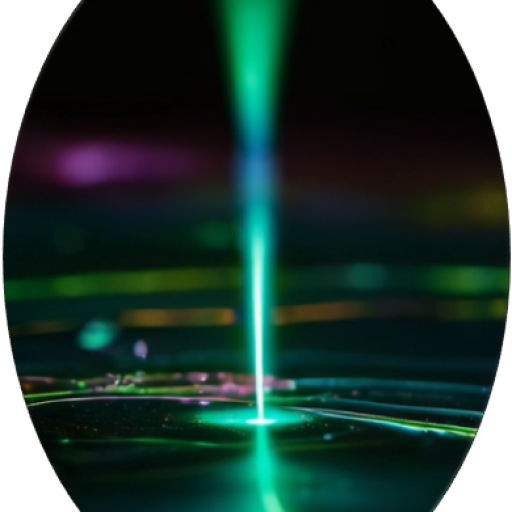Redefining Possibilities: The Future of 3D Nanoscale Manufacturing
Direct-write deposition techniques enable the creation of 3D nanostructures with unmatched precision and versatility. By leveraging focused particle beams, it becomes possible to fabricate freeform architectures on virtually any surface, with applications extending from nanoelectronics over nanomagnetics and nanooptics towards superconductivity and others. Core Benefits include:
- Nanoscale precision: individual features down to the sub-50 nm regime are routinely possible, while sub-20 nm elements can be achieved under optimized conditions.
- True 3D Fabrication: Overcome planar constraints to realize free-standing, multi-dimensional structures.
- Multi-Material Integration: Combine diverse materials in a single structure to achieve novel functionalities.
- Mask-Free Flexibility: Directly write structures with nanoscale accuracy without requiring templates.
This technology is a cornerstone for breakthroughs where design freedom, material diversity, and nanoscale precision are required.
Literature
A Review on Direct-Write Nanoprinting of Functional 3D Structures with Focused Electron Beams; V. Reisecker, R. Winkler, H. Plank; Adv. Funct. Mater. (2024), 34, 2407567.
Roadmap for Focused Ion Beam Technologies; K. Höflich et al.; Appl. Phys. Rev (2023), 10, 041311.
Additive Manufacturing of Metal Structures at the Micrometer Scale; L. Hirt et al.; Adv. Mater. (2017), 29, 1604211.
Focused Electron Beam Induced Deposition Meets Materials Science; M. Huth, F. Porrati, O.V. Dobrovolskiy; Microelectronic Engineering (2018), 185, 9.
Living Up to Its Potential – Direct-Write Nanofabrication with Focused Electron Beams; M. Huth, F. Porrati, S. Barth; J. Appl. Phys. (2021), 130, 170901.
Focused Electron Beam Induced Deposition; J. Pablo-Navarro, S.Sangiao, C.Magén, J.M. De Teresa; Nanofabrication Nanolithography Techniques and their Applications, 2020, doi:10.1088/978-0-7503-2608-7ch4.
Electrons and Ions: Tailoring Nanostructures with Precision and Versatility
Writing with electrons enable deposition with minimal energy dissipation, ensuring a milling- and impurity-free process with low temperature rise ideal for sensitive applications. Ion beams, mostly using Ga but increasingly complemented by N, O, Ar, Ne, or Xe via plasma sources provide higher deposition rates. In particular, they facilitate material tuning for functional properties such as mechanics, magnetism or conductivity. The versatility of combining these beams broadens the range of achievable nanostructures, while the choice of species ensures tailored results for specific needs, such as robustness or rapid material growth.
Literature
Roadmap for Focused Ion Beam Technologies; K. Höflich et al.; Appl. Phys. Rev (2023), 10, 041311.
3D Nanoprinting via Focused Electron Beams; R. Winkler et al.; J. Appl. Phys. (2019), 125, 210901.
The 3D Controllable Fabrication of Nanomaterials with FIB-SEM Synchronization Technology; L. Zhao et al.; Nanomaterials (2023), 13(12), 1839.
Hybrid Deposition Approaches
Deposition technologies transcend traditional fabrication through technological hybrid approaches to unlock new materials and functionalities. By combining direct-write printing with additional processes, such as temperature control (e.g. cooling stages, heating stages, lasers…), exposure to reactive gases, multiple precursor delivery, spin-coated organometallic films, it becomes possible to fine-tune deposition outcomes and expand functional capabilities. Furthermore, post-growth processes like Chemical Vapor Deposition (CVD), Atomic Layer Deposition (ALD) and Sputtering (PVD) can be employed, where the original direct-write structures serve as templates or scaffolds for further material enhancements. These hybrid techniques create a versatile toolkit for achieving high-performance nanostructures, combining the precision of direct-write fabrication with advanced material control and scalability for tailored applications.
Literature
Area-Selective Chemical Vapor Deposition of Gold by Electron Beam Seeding; A. Tsarapkin et al.; Adv. Mater. (2024), 36, 2313571.
Growth and Nanomechanical Characterization of Nanoscale 3D Architectures Grown via Focused Electron Beam Induced Deposition; B.B. Lewis et al.; Nanoscale (2017),9, 16349.
Inert Gas Enhanced Laser-Assisted Purification of Platinum Electron-Beam-Induced Deposits; M.G. Stanford et al.; ACS Appl. Mater. Interfaces (2015), 7, 35, 19579.
Comparison between Focused Electron/Ion Beam-Induced Deposition at Room Temperature and under Cryogenic Conditions; J.M. De Teresa, P. Orús, R. Córdoba, P. Philipp; Micromachines (2019), 10 (12), 799.
Low-Resistivity Pd Nanopatterns Created by a Direct Electron Beam Irradiation Process free of Post-Treatment Steps; A. Salvador-Porroche, L. Herrer, S. Sangiao, J.M. de Teresa, P. Cea; Nanotechnology (2022), 33 (40), 405302.
Advanced Instrumentation: The Backbone of Direct-Write Deposition
Direct-write deposition is typically performed using FIB-SEM dual-beam microscopes, which are commonly equipped with gas injection systems (GIS) and patterning engines. For FEBID-specific tasks, a standalone scanning electron microscope (SEM) outfitted with a GIS and patterning engine may suffice. However, more complex applications, such as multi-material fabrication or hybrid FEBID-FIBID approaches, often require advanced instrumentation featuring multiple GIS units for enhanced material flexibility. Thanks to the widespread availability of dual-beam microscopes in scientific and industrial laboratories worldwide, access to this technology is increasingly attainable, providing an accessible entry point for a broad range of users.
Manufacturers
Hitachi Microscopy, JEOL Microscopy, Orsay Physics, Raith, TESCAN, Thermo Fisher Scientific, Zeiss Microscopy
